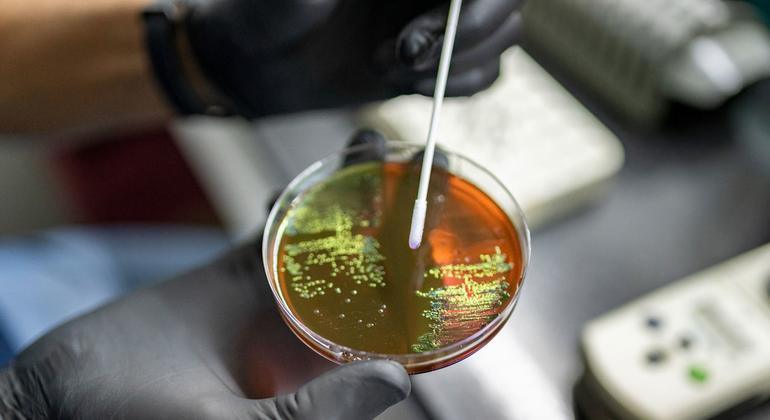AMR occurs when bacteria, viruses, fungi, and parasites change over time and no longer respond to medications. It is among the leading global threats to public health and development, with almost five million associated deaths each year. The main drivers are misuse and overuse of antimicrobials.
Catch up with our live coverage of the topic from UN High-Level Week here.
Vaccines are an essential part of global efforts to reduce antimicrobial resistance by preventing infections, reducing the use and overuse of antimicrobials, and slowing the emergence and spread of drug-resistant pathogens.
The power of vaccines
“Addressing antimicrobial resistance begins with preventing infections and Vaccines are among the most powerful tools to achieve this.”said Tedros Adhanom Ghebreyesus, director general of the WHO.
The report found that vaccines against 24 pathogens could reduce the amount of antibiotics needed by 22 percent, or 2.5 billion defined daily doses globally each year, thus supporting international efforts to address antimicrobial resistance.
While some of these vaccines are already available but underutilized, others should be developed and commercialized as soon as possible.
Prevent deaths and increase access to vaccines
The report expands on a WHO study published last year. It is estimated that the vaccines already used against pneumococcus pneumonia, Haemophilus influenzaetype B (Hib), which causes pneumonia and meningitis, and typhoid, could prevent up to 106,000 AMR-related deaths each year.
An additional 543,000 deaths could also be avoided each year if new tuberculosis (TB) vaccines were administered and Klebsiella pneumoniae,are developed and deployed globally.
“Prevention is better than cure, and increasing access to existing vaccines and developing new ones for critical diseases, such as tuberculosis, is a priority.” critical to saving lives and turning the tide on antimicrobial resistance”said Tedros, the head of the WHO.
Additionally, vaccinated people have fewer infections and are protected against possible complications from secondary infections that may require antimicrobial medications or require hospital admission.
The WHO noted, for example, that annual vaccination againstStreptococcus pneumonia33 million doses of antibiotics could be saved if 90 percent of the world’s children, along with older adults, were vaccinated.
Action statement
Vaccines could also significantly reduce the significant economic costs of antimicrobial resistance.
Globally, hospital costs for treating resistant pathogens assessed in the report are estimated at $730 billion each year. Vaccines targeting all of them could save a third of hospital costs associated with antimicrobial resistance.
During the United Nations General Assembly High-Level Week in September, world leaders adopted a political declaration committing to a clear set of goals and actions on antimicrobial resistance, including reducing annual deaths associated with antimicrobial resistance. Bacterial antimicrobial resistance by 10 percent by 2030.
The statement emphasizes key aspects, including the importance of access to vaccines, medicines, treatments and diagnostics, as well as the need for funding mechanisms to support research and innovation to address antimicrobial resistance.




